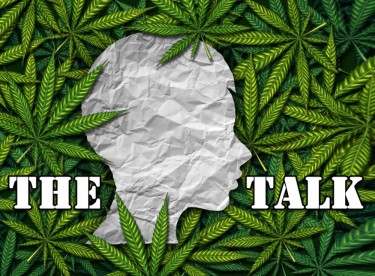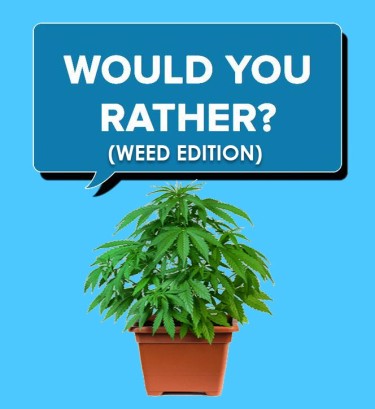Cannabis News
What the DEA Gets Wrong about the Current Fentanyl Crisis
Published
9 months agoon
By
admin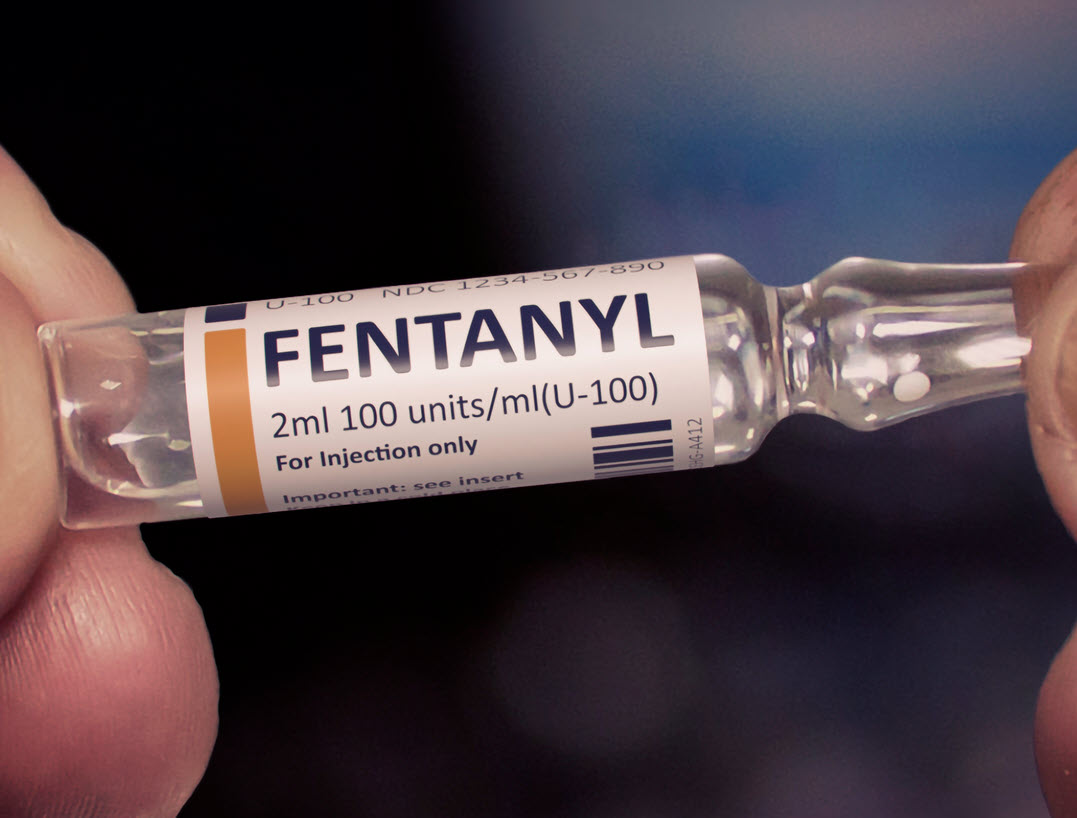
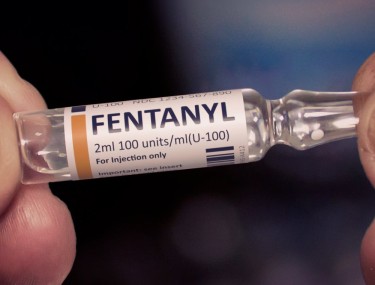
No, it’s not the Sinaloa Cartel – it’s Prohibition!
https://twitter.com/CarlitoS_lim/status/1694124572759527465?s=20
The DEA is once again missing the forest for the trees in its assessment that the sons of “El Chapo” are primarily responsible for scaling up fentanyl production and trafficking after their father’s arrest. While they may be significant players, the DEA fails to acknowledge how their own policies created the conditions that allowed fentanyl to become such a scourge.
The DEA acts as if drug cartels operate in a vacuum, when nothing could be further from the truth. Cartels like Sinaloa exist because of prohibition. For over 50 years, the US has waged a War on Drugs that has completely failed to reduce drug supply or demand. Instead, it has artificially inflated the profits of illicit drugs by pushing the drug trade into the hands of criminal organizations. With no legal market competition, groups like Sinaloa can charge astronomical prices.
The demand for opioids, both legal and illegal, has proven extremely inelastic. When the DEA restricts the prescription opioid supply, which they have done aggressively since the early 2010s, desperate people turn to the black market. With the legal supply diminished, criminal organizations rush to fill the void.
Fentanyl offers cartels an ideal product. It’s synthetic, so it doesn’t rely on the supply of plant-based drugs like heroin. It’s also incredibly potent, allowing traffickers to smuggle small amounts across the border. One kilogram of fentanyl contains 500,000 doses and is worth over $1 million on the street. The profits are staggering compared to the minimal production costs.
Yet fentanyl is also far more dangerous than traditional opioids. Even tiny dosing errors can be fatal. Illicit fentanyl has become a leading driver of the overdose crisis, with over 60,000 deaths in 2020 alone. But just as with El Chapo’s marijuana and cocaine trade, the fault lies first and foremost with prohibition.
The DEA also fails to consider its own complicity in El Chapo’s rise to power. For decades, the DEA worked closely with Mexican authorities in the War on Drugs. This partnership was frequently corrupted by individuals on both sides of the border profiting from the drug war and even directly enabling trafficking. The incentive for corruption under prohibition is simply too high.
El Chapo rose in power not just despite the DEA’s efforts, but in many ways because of them. And now the same cycle continues with his sons and associates like El Mayo. These black market dynamics will persist as long as the DEA tries vainly to prohibit human nature and market economics.
The tragic irony at the heart of the opioid crisis is that stricter prohibition led to stronger drugs. Similarly, defeating El Chapo led to more fentanyl. The DEA needs to fundamentally rethink its role. Only by moving to harm reduction over endless drug warring can we ameliorate this ongoing American tragedy.
How do you combat Fentanyl? You legalize heroin of course!
The fentanyl crisis devastating America will not end through prohibition and policing. The only solution that can effectively undermine the black market poisoning our communities with fentanyl is full legalization and harm reduction, starting with legal heroin.
Many balk at the idea of legal heroin, but it would be far safer than the current unregulated market flooded with fentanyl. When people overdose on street drugs, it’s usually because potency is unpredictable. Legal heroin with consistent dosing removes this risk. Further, providing pharmaceutical-grade heroin for free through supervised injection sites would completely decimate the cartels’ customer base.
Free heroin programs have been implemented successfully in several countries. Switzerland pioneered the approach in the 1990s, giving prescription heroin to addicts who failed other treatments. Over two decades, the program has slashed drug-related deaths, stabalized addicts’ lives, and decriminalized addiction.
Portugal enacted a similar policy, becoming the first country to fully decriminalize all drug possession in 2001. Again, the results confounded critics. Overdose deaths and HIV infections dropped significantly, and the number of people in treatment doubled. By taking a health approach instead of criminal justice, Portugal improved public safety and welfare.
The data is clear that addressing the opioid crisis with treatment and harm reduction works better than prohibition, criminalization, and stigmatization. Unfortunately, the DEA and much of America’s law enforcement infrastructure remain committed to the failed War on Drugs.
But we know from history that prohibition does not end problematic substance use—it just empowers criminals and underground markets. Alcohol prohibition gave rise to Al Capone, modern drug prohibition El Chapo. Only by legalizing substances can we regulate them for safety and undermine criminal profiteering.
Fentanyl has infiltrated the drug supply because it maximizes smuggling profits. But few would seek it out if provided legal, regulated alternatives like heroin. It may seem counterintuitive, but giving away heroin is the only way to combat fentanyl.
Rather than wasting billions on DEA budgets every year, we could run free heroin programs. If the goal is saving lives and improving public health, the solution is apparent. Any deaths under a legal heroin program would be tragic but still fewer than the tens of thousands dying from fentanyl annually.
The opioid crisis requires America to shed its ideological commitment to prohibition. Our choice is not between saving lives with prohibition or abandoning drug users to addiction. Proven harm reduction approaches can restore dignity and stabilize people’s lives. Ending the War on Drugs is the only path to finally defeating the damage of cartels and lacing of drugs like fentanyl. The sooner we accept this, the more lives will be saved.
Why forcing addicts to quit drugs is counterproductive and dangerous!
Trying to force addicts into recovery before they are ready is not just futile, but dangerous. Research shows that rehab and abstinence programs have poor success rates when participation is coerced rather than voluntary.
According to studies, only about 2-5% of people pressured into rehab by courts or families achieve long-term sobriety. Most quickly relapse when the external pressure is removed. This is because imposed rehab does not address the underlying reasons why people use drugs. Healing cannot be compelled.
Trying to make addicts quit before they choose to leads to dangerous cycles of relapse and self-medication. Criminalizing addiction makes suffering worse by removing stable life foundations like housing, families, and work.
A better approach is stabilizing addicts’ lives with compassion, not judgment. Providing safe housing, clean paraphernalia, addiction medications like methadone, and health resources reduces harm. Building a sense of community and belonging addresses addiction’s roots in trauma, isolation, and despair.
With caring support, addicted persons can progressively reduce their drug use and transition to abstinence. But this must be their own choice. Forced rehab merely engenders distrust and resistance. Meeting drug users where they are at and giving them autonomy over recovery has the best outcomes.
The War on Drugs tries to impose sobriety through prohibition and punishment. But addiction is a disease, not a moral failure. We must move from condemnation to open arms, from control to empowerment. Only then can we end the overdose crisis ravaging our communities. For addicted lives matter too.
It’s time to nullify the Controlled Substance Act and renegotiate Drug Policies!
The fentanyl crisis has underscored the abject failure of America’s War on Drugs. Each year, the human toll of overdoses and mass incarceration grows, while cartel violence terrorizes our southern border. We pursue this failed policy based on a false dichotomy – that our only options are either the current prohibitionist approach or totally abandoning drug users to addiction. In reality, the solution lies in a third path – harm reduction and decriminalization.
To enact this sensible reform, we must nullify the Controlled Substances Act that serves as the legal bedrock of prohibition. This Nixon-era law categorizes drugs into schedules largely based on moral judgements rather than pharmacological facts. It arbitrarily separates “legal” and “illegal” substances without scientific rationale. This ideological law does not curb drug use – it just empowers black markets and criminal organizations.
In effect, the Controlled Substances Act created a government-enforced monopoly for the pharmaceutical industry to peddle its own addictive drugs. Big Pharma helped spawn the opioid crisis through deceptive and irresponsible marketing of oxycontin and vicodin. It lobbies to keep plant-based competitors like cannabis and psychedelics prohibited. The DEA acts as its enforcement arm, violently suppressing any threats to this pharmaceutically-driven drug monopoly.
It is time to acknowledge that cognitive liberty and the authority over one’s consciousness is a basic human right. While certain substances like alcohol and heroin carry risks, experience shows prohibition does far more harm than drug use itself. Education, harm reduction, and voluntary treatment provide a more ethical and effective approach.
Decriminalizing possession would keep nonviolent users out of prison. Legalizing natural psychoactive plants could help many mental health conditions. Providing pharmaceutical-grade opioids in safe injection sites would halt fentanyl overdoses. We know these measures work because they have succeeded in countries like Switzerland, Portugal, and Canada.
America’s drug policies do not have to be dominated by ignorance, racism, and moral panic. We can base them on science, liberty, and compassion instead. But this begins with grassroots advocacy. Every voter should demand their representatives support drug policy reform. Local ballot initiatives are powerful tools as well.
The younger generations do not buy into “reefer madness” propaganda; they know the Drug War has been an abysmal failure. The politicians still carrying water for these harmful policies are relics of the past. Their day is done. The future lies in ending the racist, unethical, disastrous Controlled Substances Act regime. Only when we reclaim autonomy over our minds and bodies can we meaningfully address the overdose crisis. It starts by legalizing freedom.
FENTANYL AND WEED, READ ON…
You may like
-


Is Your Kid Smoking or Vaping Weed?
-


Press Release: PsychedelicNewsWire Named Official Media Sponsor of the 4th Annual Psychedelic Therapeutics and Drug Development Conference
-


Memorial Day’s best weed, prerolls, carts, and more 2024
-


Naps Done Right Can Make a Huge Difference
-


Michigan is selling more cannabis, but retailers are taking in less money
-


Can Marijuana Give A Break From All The Drama

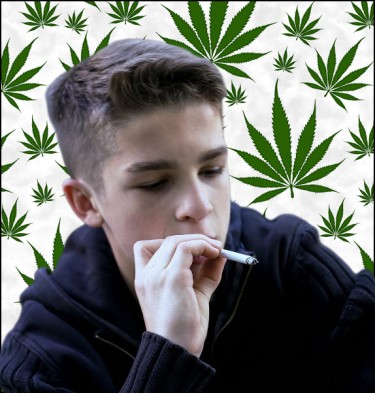
Marijuana for recreational and medicinal purposes is becoming more widely available and simpler to purchase every day. Furthermore, opinions about the drug’s possible risks have changed as a result of recent legislative modifications, especially among young teenagers.
While proper use of marijuana can offer health benefits for specific conditions, inappropriate use can lead to a variety of problems. It can severely impact health, situational judgment, memory, coordination, and more.
Given that marijuana has rapidly become a much more commonly used drug among young people, it is crucial to recognize the main signs of marijuana use in teens to ensure their safety and well-being.
Statistics on Child Marijuana Use
Though the stats may surprise you, marijuana is the most often used narcotic among teenagers. Among children between the ages of 12 and 17, the National Center for Drug Abuse reports that:
– Nearly 44% have tried marijuana in their lifetime, up from 37% in 2019.
– 35% used marijuana in the past year.
– Almost 7% of 12th graders use marijuana daily.
Regretfully, eighth, ninth, and tenth kids are exposed to an alarmingly high level of marijuana. Early usage is problematic since those who start using earlier have a greater likelihood of heavier use later in life.
How THC Impacts the Brain
The active element in cannabis is tetrahydrocannabinol (THC), which produces the “high” associated with marijuana. THC can be ingested by smoking cannabis flowers, vaping concentrated forms, or eating THC-infused foods. THC impacts the brain by interfering with processes that are typically controlled by naturally existing endocannabinoids.
The brain grows from birth to the mid-twenties, and consuming marijuana at a young age can interrupt this important development. Early marijuana usage appears to influence brain development, according to recent research.
The effects of cannabis on the brain are extensive:
– Executive Functioning: Skills necessary for daily life, such as focus, memory, problem-solving, planning, reasoning, and emotional control, are compromised.
– Working Memory: The ability to remember and later recall or use information is reduced.
– Lingering Effects: The impact of cannabis use can last well beyond the period of intoxication. Even if someone smokes on a weekend, the effects can persist into the following week. Regular use leads to a persistent decline in executive functioning, working memory, and other cognitive areas.
Cannabis use interferes with the brain’s circuits, and it remains uncertain whether the brain can fully recover if marijuana use is discontinued.
Signs Your Child is Using Cannabis
Recognizing if your child is using marijuana can involve noticing various signs, including:
– Hair or clothes with a pungent marijuana smell
– Red or bloodshot eyes
– Delayed reaction times
– Mood swings
– Laziness and tiredness
– Presence of marijuana-related paraphernalia
– Paranoia or anxiousness
– Increased hunger or “munchies”
Visible Signs of Marijuana Use
Shortly after usage, marijuana’s effects can be perceived both visually and aromatically. It is very suggestive of marijuana usage if your adolescent returns home with red or bloodshot eyes. Physical and mental delays in response times and problems with muscular coordination are further symptoms.
Cannabis has a unique fragrance that is another warning clue; it is frequently characterized as having a pungent, musky smell like that of a skunk. On your teen’s clothes, this odor might cling rather readily.
Changes in Emotional State
The body and mind might react differently to different strains or varieties of marijuana. Teenage marijuana usage is frequently indicated by mood swings, lethargy, and general exhaustion in their day-to-day demeanor. Depending on how their body responds, they might also seem nervous and exhibit an elevated heart rate.
Your youngster may struggle to focus at job, school, or home as a result of these changes, which frequently results in subpar performance and grades. This decrease might be a clear indication that marijuana use has turned into an addiction.
Educating Your Child about Marijuana
Regardless of whether you suspect your child is using cannabis, it’s important to discuss it. Parents and caregivers should talk about all types of dangerous substances, including nicotine, alcohol, and cannabis, with children as early as elementary school.
It’s important to be proactive and talk to your youngster about the risks associated with marijuana. These talks may serve to deter marijuana usage or at the very least postpone the initial experience until the mid-20s, when the brain is more completely matured.
As teenagers become older, their need for independence grows, which makes it harder for parents to control their actions. Still, parents need to persevere. It is significantly more dangerous to consume cannabis than it is uncomfortable to have a difficult talk.
Addressing Marijuana Use and Seeking Help
For teenagers’ wellbeing, it is essential to identify and treat marijuana usage. It’s crucial to handle the matter with compassion and support if you think your child may be consuming marijuana. Discussing its usage, the rationale behind it, and any possible hazards should come first in an honest and nonjudgmental discussion. Give your child access to a secure environment where they may talk about their thoughts and experiences. You can gain insight into their viewpoint and advice on how to make better decisions by having this discussion.
If using marijuana has become troublesome, you might think about getting professional assistance. Resources like therapists, counselors, and specialty treatment programs can provide your kid with the help they need. These specialists are qualified to deal with underlying problems including stress, peer pressure, or mental health disorders that may be causing drug use. Early intervention can stop the usage from getting worse and support your kid in creating healthy coping mechanisms. Getting a medical expert involved can also offer a methodical way to handle the matter and guarantee that your adolescent gets the treatment they need.
It is critical to be involved and supportive throughout the process. Encourage your kid to participate in activities that support their well-being and offer positive reinforcement for good habits. Stay educated about the services available in your area, and consider joining support groups for parents struggling with similar challenges. You can assist your child in navigating this difficult period and promote a healthy, drug-free future by keeping open communication and obtaining expert support as required.
Bottom Line
Parents need to be vigilant about the signs of marijuana use in their children, given its prevalence among teenagers and its potential impact on their health and development. Early detection, open communication, and seeking professional help if needed are key strategies for addressing marijuana use in adolescents. By providing support, education, and access to resources, parents can help guide their children towards healthier choices and a drug-free future.
HOW TO HAVE “THE TALK” WITH YOUR KIDS, READ ON..
Cannabis News
How Did Hidden Leaf Cannabis Become the Leader of the Ontario Marijuana Market?
Published
1 day agoon
May 17, 2024By
admin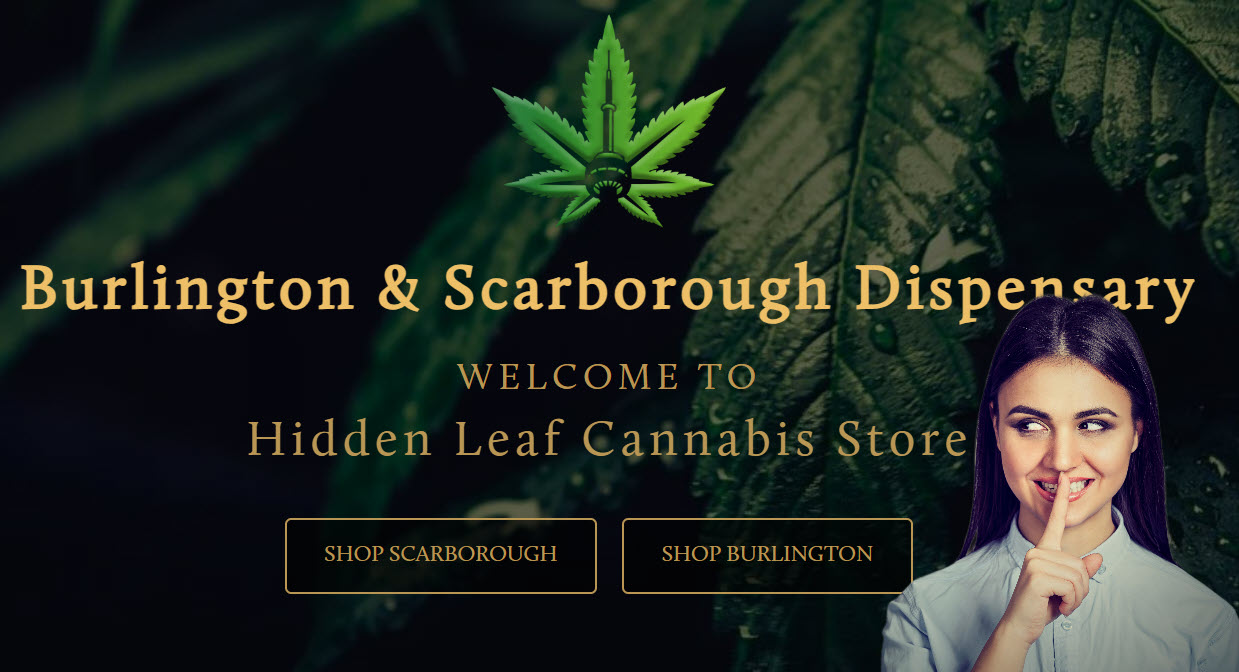
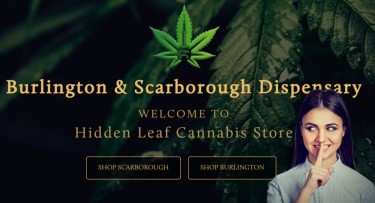
Cannabis.net sat down with Ontario’s hottest cannabis store to find out some of their “secret sauce” that made them the best dispensary in Ontario, Canada.
Q: How did you come up with the name Hidden Leaf for Ontario’s premier cannabis dispensaries?
A: Growing up, I was always a big fan of the anime show Naruto, where the main character grew up in a village called “Hidden Leaf Village.” Naruto’s backstory really resonated with me, inspiring me to name the company Hidden Leaf. As Ontario’s premier Burlington and Scarborough Dispensary, we strive to embody the spirit of community and resilience found in Naruto’s tale.
Q: What makes Hidden Leaf the best dispensary in Scarborough or Burlington?
A: At Hidden Leaf, customer service sets us apart. Unlike many other dispensaries that curate their menu based on profitability, our customers drive our selection. We actively encourage our patrons from both our cannabis store Scarborough and cannabis store Burlington to send in their product recommendations, which we try our best to stock. Plus, we offer the most competitive pricing, making cannabis affordable for everyone. Our commitment to these principles makes us stand out in the Scarborough dispensary and Burlington dispensary markets.
Q: How did you first get into the Canadian cannabis market? What made you take the leap of faith?
A: From a young age, I’ve always wanted to own a business and had a passion for the cannabis industry, learning to grow plants and understanding the different types of concentrates. Taking the risk to enter the business felt right as it was a great way to expand my knowledge and participate actively in the burgeoning cannabis market in cities like Scarborough and Burlington.
Q: Canada was the first G7 country to legalize weed, what advice would you look back and give your past self? What do you wish you knew then that you know now?
A: Looking back, I wish I had learned more about the cannabis business earlier and entered the industry as soon as it was legalized. Now, understanding the different avenues to enter the cannabis industry, I would definitely consider owning my own grow facility among other ventures. This knowledge would have been invaluable from the start, especially in dynamic markets like those of our Cannabis Store Burlington and other locations.
Q: What are Hidden Leaf’s best strains, or what do customers come back for over and over?
A: Hidden Leaf carries a wide variety of brands and strains to cater to every customer’s needs. From budget-friendly options for those looking to save a few bucks to premium quality strains for the real cannabis connoisseurs, our selection is vast. Customers frequently return for our consistent quality and the breadth of our offerings, including popular cannabis flowers at both our Scarborough and Burlington locations.
Q: What has been the biggest challenges in setting up a cannabis business in Canada?
A: The biggest challenge has been finding the right location. Despite legalization, there’s still a stigma around cannabis with many landlords, making it hard to lease properties for cannabis businesses. Additionally, the market is quite saturated with many retailers opening up, so it’s crucial to choose strategic locations for our dispensaries to avoid excessive competition, particularly in areas served by our Scarborough dispensary and cannabis store Burlington.
Q: What do you think about the future of cannabis beverages?
A: The future of cannabis beverages and edibles is very promising. Many people who are new to cannabis are not fans of smoking, so THC beverages and edibles offer a fantastic alternative. These products are expected to attract a new wave of consumers looking to explore cannabis in a more familiar and accessible form.
Q: What is the best way for people to find out more about us or visit us? Website? Social media?
A: The best way for customers to find out more about Hidden Leaf is through our website. It’s the go-to place to find the closest location, whether that’s our Scarborough dispensary or cannabis store Burlington, and to explore our menu and pricing. Our website is a comprehensive resource for anyone interested in our products and services.
Q: If someone is trying to decide which dispensary to go to in Ontario, why should they go to Hidden Leaf?
A: At Hidden Leaf, it’s all about customer service and pricing. We don’t believe in upselling; instead, our goal is to find the best product within your budget. Our customers help shape our menus with their recommendations, which we order in every week. With very competitive pricing, we believe cannabis should be affordable for everyone, making our Burlington and Scarborough Dispensary the go-to choice for quality cannabis products and genuine customer care.
Cannabis News
Are You Bored So You Smoke Weed or Do You Smoke Marijuana and Get Bored?
Published
1 day agoon
May 17, 2024By
admin
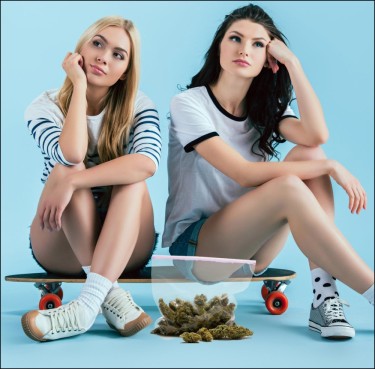
Cannabis and Boredom
Boredom is a universal human experience characterized by a lack of interest, motivation, or engagement in one’s current activities. It is a state of mind that can leave individuals feeling restless, apathetic, and dissatisfied.
But why do people get bored?
Research suggests that boredom serves a vital function within the life of the individual, acting as a signal that one’s current situation is unfulfilling and that change is needed.
Boredom can be a catalyst for personal growth and development. When faced with monotony, the mind yearns for stimulation and seeks out new experiences.
This innate drive pushes individuals to explore new hobbies, learn new skills, and challenge themselves in ways that promote self-improvement. In this sense, boredom can be seen as a motivational force that encourages people to break free from stagnation and pursue meaningful goals.
However, in today’s fast-paced, instant-gratification society, many individuals struggle with the discomfort of boredom and seek quick fixes to alleviate its symptoms.
A recent Reddit post posed the question, “Do you use cannabis to escape boredom, or does cannabis make you content with being bored?” This query highlights a common trend among cannabis users who turn to the substance as a means of coping with idle moments.
In this article, we will explore the concept of “escaping boredom” through cannabis use and examine the potential pitfalls of relying on the substance as a sole means of entertainment.
We will also delve into the function of boredom within the life of the individual and discuss how cannabis, when used mindfully, can be a tool for enhancing focus and productivity rather than a mere distraction from tedium.
Boredom, often perceived as a negative emotional state, has been the subject of numerous studies that highlight its potential benefits for personal growth. A study conducted by Mann and Cadman (2014) found that engaging in boring tasks can stimulate creativity and problem-solving abilities. The researchers suggest that when the mind is not occupied with external stimuli, it tends to wander and generate novel ideas.
Similarly, Gasper and Middlewood (2014) discovered that boredom can lead to increased motivation and goal-directed behavior, as individuals seek to alleviate the unpleasant state by pursuing meaningful activities.
However, boredom can become toxic when it is chronic or excessive. Prolonged periods of boredom have been linked to negative outcomes such as depression, anxiety, and substance abuse (Eastwood et al., 2012).
When individuals lack the skills or resources to cope with boredom in a constructive manner, they may turn to maladaptive behaviors as a means of escape. This can create a vicious cycle where the temporary relief provided by these behaviors reinforces their continued use, leading to further disengagement from life’s challenges and opportunities.
So, what’s the secret to never being bored? The answer lies in cultivating a curious and engaged mindset. Individuals who approach life with a sense of wonder and a desire to learn are less likely to experience boredom, as they find joy and meaning in even the most mundane tasks.
By setting goals, pursuing hobbies, and seeking out new experiences, one can maintain a sense of purpose and fulfillment that keeps boredom at bay.
As a regular cannabis smoker myself, I can attest to the fact that it is possible to lead a stimulating and engaging life while still enjoying the benefits of the plant. In the next segment, I will share my personal secret for using cannabis as a tool for enhancing focus and creativity rather than as a means of escaping boredom.
By mindfully integrating cannabis into a balanced and purposeful lifestyle, individuals can harness its potential for personal growth and avoid falling into the trap of chronic boredom.
As a seasoned cannabis enthusiast, I’ve come to understand that the key to overcoming boredom lies not in escaping it, but in embracing it.
The first step is to recognize that the anxiety associated with boredom is not inherently negative. Instead, it is an opportunity for self-reflection and growth. By becoming comfortable with boredom, you open yourself up to new possibilities and experiences.
One of the most common mistakes that stoners make is relying solely on cannabis for entertainment. While cannabis can certainly enhance many activities, it is essential to find something to pursue that isn’t related to smoking.
This requires honest introspection and a willingness to explore your interests and passions. Take the time to reflect on what truly excites and motivates you, and don’t be afraid to step outside your comfort zone.
When pursuing new activities, it’s crucial to focus on the process rather than the outcome. In our fast-paced, instant-gratification society, we often fixate on the end result and lose sight of the joy found in the journey itself.
By falling in love with the process of doing, you can find fulfillment and satisfaction in the present moment, regardless of the ultimate outcome. The goal should serve as a guiding light, but the real magic happens in the day-to-day efforts you put forth.
Once you discover an activity that genuinely captivates you, cannabis can become a tool for enhancing the experience rather than a means of escaping boredom. When you’re engaged in something you love, smoking cannabis can heighten your focus, creativity, and enjoyment without hindering your productivity.
If you find yourself frequently bored and turning to cannabis as a crutch, take a step back and ask yourself, “What would I really like to be doing right now?” Allow your mind to explore various possibilities and jot down any ideas that come to mind.
From this list, identify an activity that isn’t passive or cannabis-related, and make a conscious effort to dedicate your “bored” moments to pursuing this interest.
As you begin to focus on this newfound passion, you’ll notice that cannabis no longer serves as an escape from boredom but rather as a complement to your engaging pursuits. You’ll find yourself sparking a joint and diving into your work with renewed enthusiasm and focus.
Remember, the key to beating boredom as a stoner lies in embracing it as an opportunity for self-discovery and personal growth. By finding something you truly love and immersing yourself in the process, you can transform those once-dreaded moments of boredom into a catalyst for a more fulfilling and satisfying life.
As we conclude this exploration of cannabis and boredom, it’s essential to acknowledge that the temptation to use cannabis as an escape from boredom is understandable, particularly for young people who are still discovering their identity and purpose in life.
In a world that moves at breakneck speed, it’s easy to fall into the trap of seeking instant gratification and quick fixes for even the most mundane tasks.
However, it’s crucial to recognize that the fast-paced nature of our society has transformed our minds into dopamine-addicted entities, constantly craving the next hit of excitement or stimulation. This mindset can lead to a vicious cycle of unfulfillment and dissatisfaction, as we become increasingly reliant on external sources of pleasure to combat boredom.
The key to breaking free from this cycle lies in embracing difficulty and challenging ourselves to grow. By engaging in activities that push us beyond our comfort zones and require us to learn new skills, we can cultivate a sense of achievement and fulfillment that goes beyond fleeting moments of pleasure.
This process of overcoming obstacles and mastering new abilities reinforces our motivation to continue pursuing personal growth and development.
Ultimately, boredom is a weapon that can be wielded for good or ill, depending on how we choose to frame it. Rather than allowing boredom to dominate our lives or turning to cannabis as a means of escape, we must learn to harness its power and mold it into a tool for positive change. By embracing boredom as an opportunity for self-reflection, exploration, and growth, we can transform those moments of restlessness into catalysts for personal transformation.
So, to all the cannabis enthusiasts out there, I encourage you to view boredom not as an enemy to be vanquished but as an ally in your quest for a more fulfilling and purposeful life. Don’t let cannabis become a crutch that holds you back from reaching your full potential. Instead, use it as a tool to enhance your experiences and complement your passions.
Armed with this newfound perspective, go forth into the world with confidence and determination. Embrace the challenges that come your way, and use them as stepping stones to greatness.
Let boredom be your guide, leading you towards a life filled with meaning, purpose, and endless possibilities. And when you do choose to indulge in cannabis, do so not as an escape from reality but as a celebration of the incredible journey you’re on.
In the end, the sticky bottom line is this: Life is too short to be bored. So light up that joint, kick some ass, and take some names along the way. The world is yours for the taking, and with the right mindset, there’s nothing you can’t achieve.
STONED AND BORED, READ ON…
WOULD YOU RATHER… THE GAME TO PLAY WHEN YOU ARE STONED AND BORED!

Is Your Kid Smoking or Vaping Weed?

Press Release: PsychedelicNewsWire Named Official Media Sponsor of the 4th Annual Psychedelic Therapeutics and Drug Development Conference

Memorial Day’s best weed, prerolls, carts, and more 2024

Naps Done Right Can Make a Huge Difference

Michigan is selling more cannabis, but retailers are taking in less money

Can Marijuana Give A Break From All The Drama

Consumer Spending Validates Marijuana Rescheduling

How Did Hidden Leaf Cannabis Become the Leader of the Ontario Marijuana Market?

Are You Bored So You Smoke Weed or Do You Smoke Marijuana and Get Bored?

Cannabis Rescheduling Takes The Next Steps

Distressed Cannabis Business Takeaways – Canna Law Blog™

United States: Alex Malyshev And Melinda Fellner Discuss The Intersection Of Tax And Cannabis In New Video Series – Part VI: Licensing (Video)

Drug Testing for Marijuana – The Joint Blog

What you Need to Know

Cannabis, alcohol firm SNDL loses CA$372.4 million in 2022

NCIA Write About Their Equity Scholarship Program

City Of Oakland Issues RFP For Employee Training Programs

It has been a wild news week – here’s how CBD and weed can help you relax

A new April 20 cannabis contest includes a $40,000 purse

UArizona launches online cannabis compliance online course
Trending
-

 Cannabis News1 year ago
Cannabis News1 year agoDistressed Cannabis Business Takeaways – Canna Law Blog™
-

 One-Hit Wonders1 year ago
One-Hit Wonders1 year agoUnited States: Alex Malyshev And Melinda Fellner Discuss The Intersection Of Tax And Cannabis In New Video Series – Part VI: Licensing (Video)
-

 drug testing5 months ago
drug testing5 months agoDrug Testing for Marijuana – The Joint Blog
-

 Cannabis 1011 year ago
Cannabis 1011 year agoWhat you Need to Know
-

 Marijuana Business Daily1 year ago
Marijuana Business Daily1 year agoCannabis, alcohol firm SNDL loses CA$372.4 million in 2022
-

 Education1 year ago
Education1 year agoNCIA Write About Their Equity Scholarship Program
-

 Education1 year ago
Education1 year agoCity Of Oakland Issues RFP For Employee Training Programs
-

 Cannabis1 year ago
Cannabis1 year agoIt has been a wild news week – here’s how CBD and weed can help you relax





